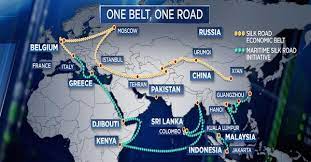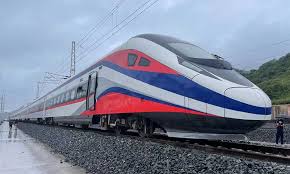Italy seems set to deliver China’s Belt and Road another setback

Rome: Even before Italy suggested leaving China’s Belt and Road Initiative (BRI), the scheme was facing difficulties. Now the likely loss of Rome will deal it an especially hard blow.
Meanwhile, the Biden White House and India have announced a BRI competitor. They plan a trade corridor that will build rail and sea routes to connect Asia with the Middle East and Europe. Beijing’s effort to use the BRI to extend its global economic and diplomatic reach seems to be falling far short of the ambitions that prompted President Xi Jinping at the 2017 Belt and Road Forum to describe it as the “project of the century.”
Italian Prime Minister Giorgia Meloni told reporters at the recent G-20 meetings in India that her government had not yet arrived at a final decision. Italy has until December to make a formal statement of withdrawal, otherwise the BRI arrangements Italy agreed to in 2019 will automatically renew in 2024. If, as is likely, Italy does withdraw, it will take from China’s BRI the only member that is also part of the G-7 Group of advanced economies.

Diplomatic circles speculate that Washington and the European Union had pressured the Italians to withdraw. It is in this significant perhaps that next year Italy will assume the rotating presidency of the G-7. If Washington and Brussels have applied pressure, neither they nor Rome have admitted to it. All the Italian government has said is that membership has failed to sufficiently benefit its economy and that otherwise, Italy is determined to maintain friendly trade and diplomatic relations with China. Meloni and Chinese Premier Li Qiang at the recent G-20 meetings went so far as to put out a joint statement expressing their intention to “consolidate and deepen dialogue between Rome and Beijing.” Still, Italy’s ability to maintain good relations even after a withdrawal from the BRI could, according to Washington’s thinking, encourage others to severe their links to the arrangement.
The BRI faces other troubles as well. Many other of its members have found the arrangements more burdensome than originally expected. From its beginning, the BRI had a Mafia-like feel to it. Beijing would approach needy countries in Asia, Africa, Latin America, the Middle East, and the periphery of Europe and offer loans for important infrastructure projects – ports, rail links, dams, roads, and the like. State-owned Chinese banks would arrange the financing and Chinese contractors would execute the projects. When complete, the Chinese would manage them. If the host country failed to pay, the projects would come under Chinese ownership. Either way, Beijing gained influence and considerable leverage over the nations that allowed themselves to become involved. Since Xi first rose to the presidency in 2012, China, according to the AidData research facility at the University of William and Mary, has made over $1 trillion in such loans in some 150 countries making China the world’s largest official creditor.
Over time, many BRI clients have realized the one-sided nature of these arrangements. A big part of the problem is that the projects pursued under the BRI were chosen for political and diplomatic rather than economic reasons. Many of these efforts were always dubious, and now it is clear that they cannot earn enough to support the loans. In Sri Lanka, for instance, even before the Covid pandemic shut down trade, the BRI-built port lacked the traffic to meet the terms of the loan. These loans have gone bad. Others have, too, even though the Chinese state-owned banks involved often fail to make such a declaration.
Similar things are occurring across the entire scheme. Pakistan, one of the largest BRI participants, has fallen so far short of its obligations that it has had to turn to the International Monetary Fund (IMF) for relief. Loans in Africa look especially shaky. Economists at the World Bank estimate that now some 60 percent of all BRI loans involve countries in financial distress.





